Bird Baths
They may be a lot of work, but an unexpected visitor can make them worth the trouble.
(Listen to the radio version here.)
For the first 20 or so years that I lived in Duluth, I didn’t have a bird bath. In a neighborhood with a nearby creek and Lake Superior itself less than a mile away, I figured a tiny water feature could hardly provide birds with anything they couldn’t get on their own, so setting out a bird bath seemed more trouble than it would be worth.
Maintaining bird baths responsibly requires diligence. Birds drink as well as bathe in them, so it’s important to make sure that water is clean. Also, mosquitoes—especially the species that transmit diseases among birds, humans, and other vertebrates—breed in standing water.
So I avoided the whole issue for years, right up until I got a good camera. Knowing that many warblers are drawn to the right kinds of bird baths, suddenly the work of maintaining one or two seemed worthwhile.
In my experience, the traditional bird baths set on a pedestal don’t attract many warblers or other tricky-to-observe species, which expect natural water supplies to be closer to the ground.
For a while I was using a really cool ground bird bath that looked like a natural little waterfall, an electric pump keeping the water recirculating.
It lasted only a few years before the pump failed and wasn’t reparable. I felt bad—it had attracted a lot of wonderful birds—but I hated using electricity to power it anyway.
Now I have five bird baths, all set near each other just in front of my raspberry bed. Four are identical shallow dishes from a bird feeding store, set in pairs, one on the ground and the other on a stand about ten inches off the ground. Between those two pairs is a kitty litter pan with a solar-powered recirculating bubbler in the center. (That bubbler came from the pedestal bird bath pictured above, after the basin cracked. The solar-powered bubbler part still works.)
The sound of water dripping from the bubbler attracts lots of birds.
Every morning I empty all five baths and rinse them thoroughly with my hose on the most powerful “jet” setting, and then I fill them with fresh water. My catbirds and Brown Thrashers often fly in for a drink as soon as I’m done, sometimes while I’m still putting away the hose.
I used to photograph birds at the baths from inside the wonderful portable bird blind my friend Bruce Pomeroy gave me back in 2006. Unfortunately, it blocks the view of the bird baths from the house, so I had to set it up and take it down a lot.
Late last fall, Russ and I put in a patio. Sitting there puts me further from the bird baths than I was in the blind, but to compensate, I’m now using a longer lens—200-800 mm—set on a tripod. My jays, robins, catbirds, and thrashers quickly adjusted to my presence, and migrating birds seem to trust that the local birds know what they’re doing, so I’ve managed a few nice photo ops this year, including of birds at some feeders that are very close to the patio.
In August, from the patio, I got some photos of a Yellow Warbler at the bird bath. It’s a very common species, but one that doesn't show up often on Peabody Street.
Then on Labor Day, what to my wondering eyes should appear but a Connecticut Warbler! He posed from several different angles, giving me some of the best Connecticut Warbler photos I’ve ever taken.
The Connecticut Warbler is one of the rarest and most narrowly distributed wood warblers in the northern coniferous forest, its densest breeding populations concentrated in a very small region of southern Ontario and northern Minnesota. I used to see one or two just about every year in my own backyard during fall migration, and often in spring as well, but they’ve declined noticeably since we moved here.
In June, I heard one or possibly two different individuals singing at a distance the day I birded in the Sax-Zim Bog with my friend Paula. But if I couldn’t see one singing at full volume exactly where they belong, I certainly didn’t expect to see one up close and personal skulking silently in my own backyard. The bird did not make a sound during the minute or two it was at the bath, so I’m lucky I was looking in the right place at the right moment.
On Tuesday, I saw what I was virtually positive was a second Connecticut Warbler in an apple tree branch just above the bird bath.
This one was in more ambiguous fall plumage, making it what we birders call a “confusing fall warbler.” I excluded Yellow Warbler because of the white eye-rings—every time I’ve seen Yellow Warblers in fall, their eye-rings are buffy or yellowish. But I shouldn’t have been so fast to dismiss it as a possibility.
I figured this bird could possibly have been a Mourning Warbler, so I asked my friends Paula Lozano and Erik Bruhnke to look at a couple of my photos. Paula agreed with me that it looked wrong for Mourning; I hadn’t suggested Yellow as a possibility. Erik wrote:
The undertail coverts look the way they do, due to the angle of the bird's position. The bird itself is relatively stocky, and has a bold yellow head (good traits for Yellow Warbler). I see what you're saying about the eye ring, and Yellow Warblers can show an eye ring sometimes (and sometimes molt/brightness throughout the face can exaggerate the appearance of the eye ring).
A Connecticut Warbler would show an earthier/slightly brownish/faded gray head, relative to the yellowish belly. Other very slight additional thing, a Connecticut Warbler would show an ever-slightly more elongated throat that blends into the beak. Your bird is a tricky Yellow Warbler.
Oh, well. That which I was calling a Connecticut Warbler by any other name looks as sweet, and I have the photos to prove it.
My photos are a constant reminder of how grateful I am to be alive on this lovely little planet, and how obligated I am to protect it so that one day my grandson Walter will be able to enjoy Connecticut Warblers in his own backyard. But the way the species is declining, I’m afraid that’ll take more than just luck and a clean bird bath.



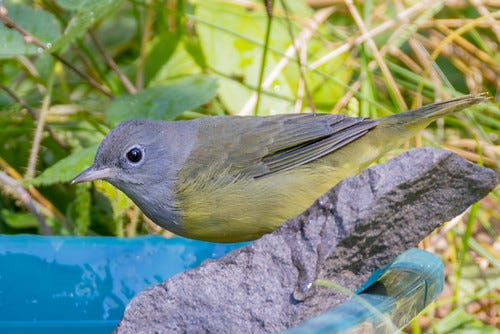
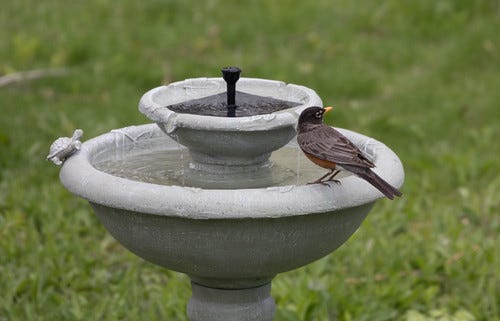
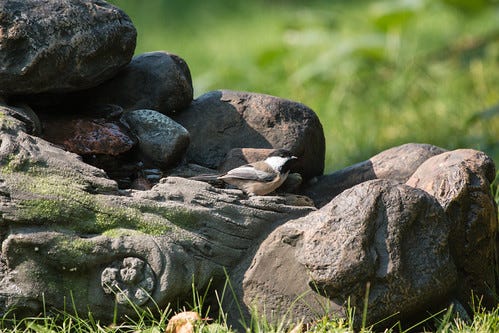
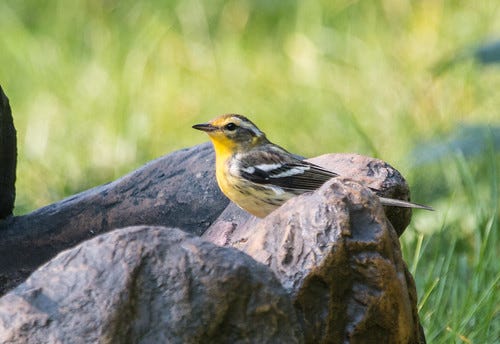
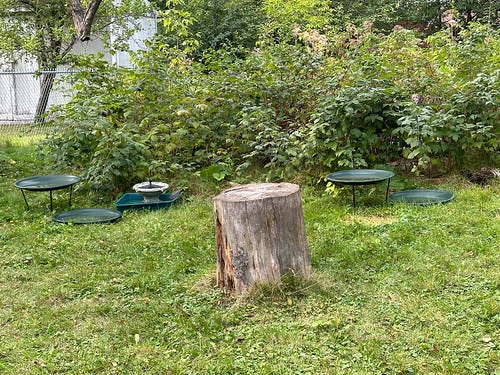
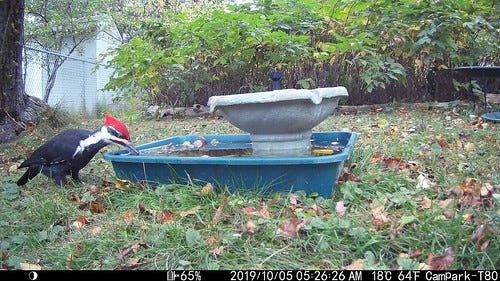
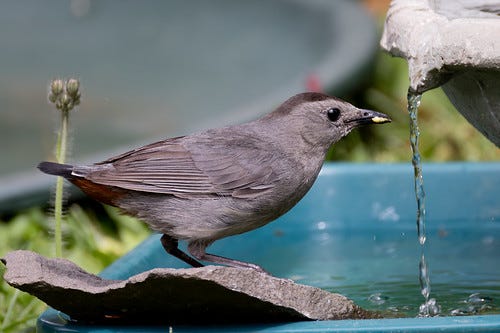
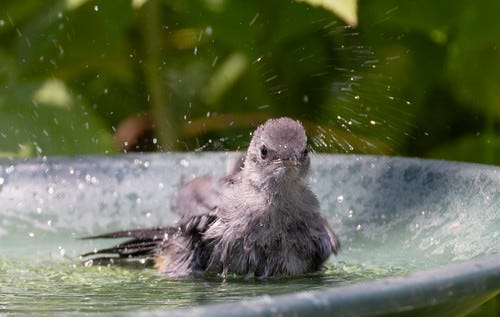
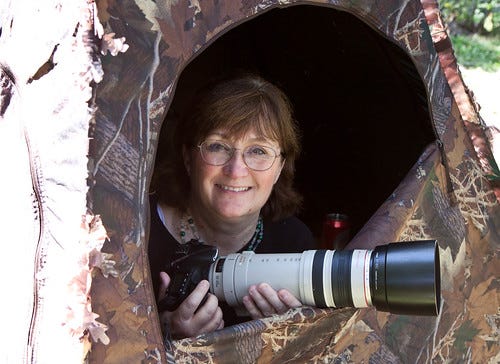
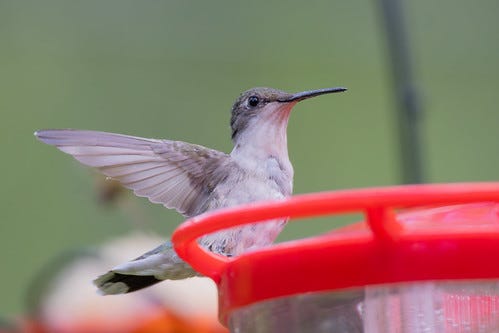
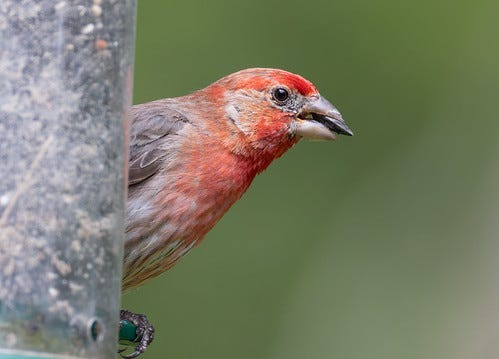
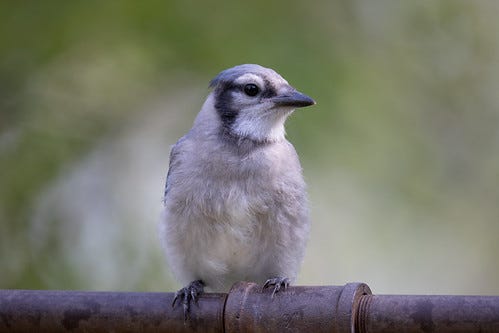
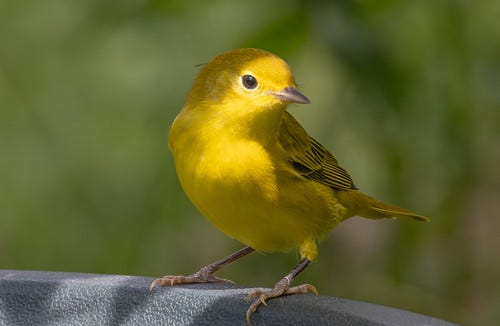
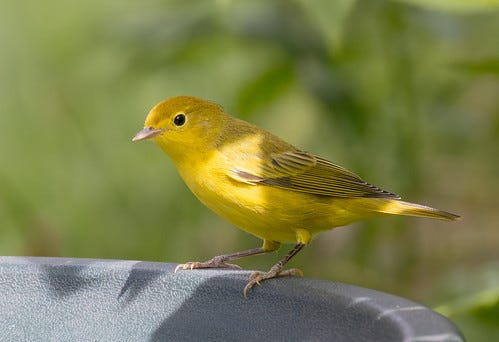
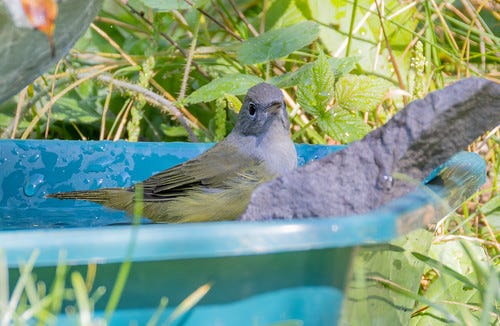
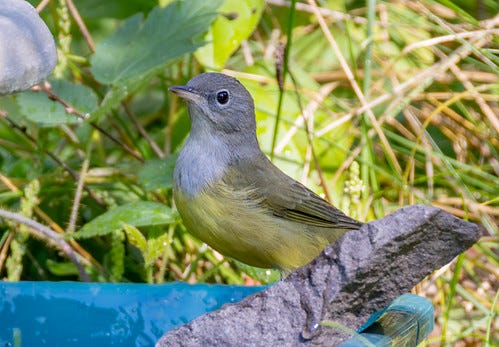
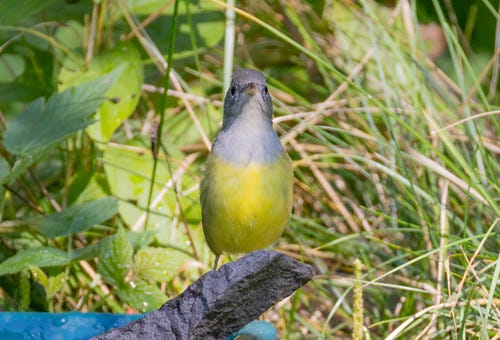
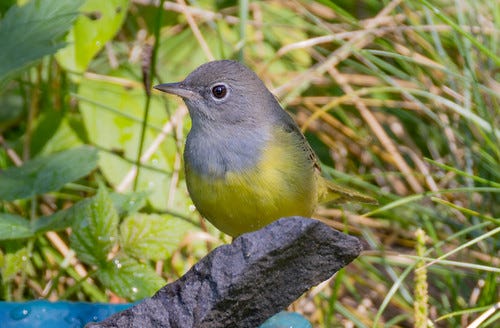
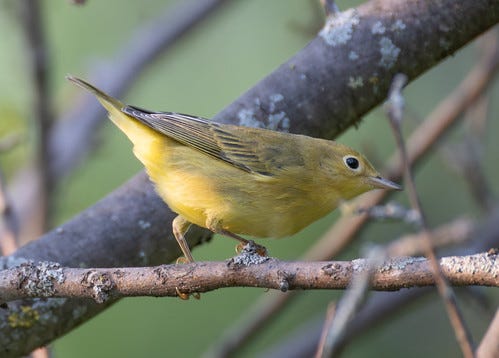
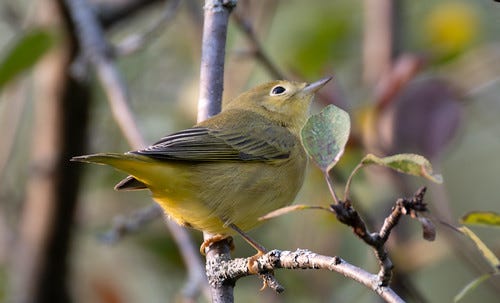
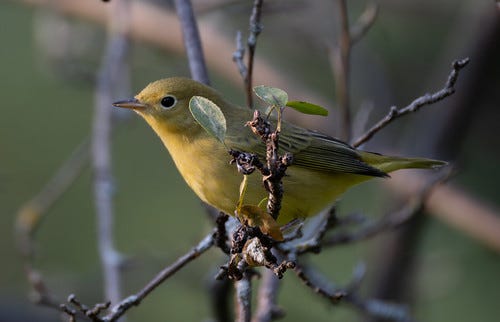
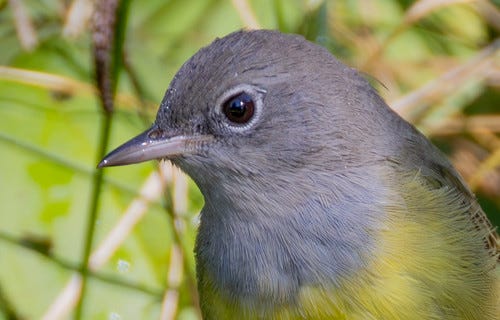
Hey Laura, I sent an email just now to your chickadee address. I don't know if it's still good. I have three old Bird Watcher's Digests from 2004-5 I'd like to send you in appreciation if you'd like them and don't have them. My friend found them in a box of old stuff! Like new. I could send them in care of a friend's office or if you have a post office box. Happy birding, G